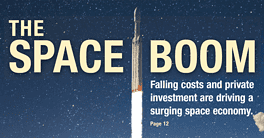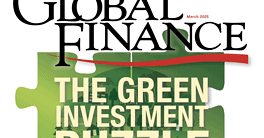Global Financeeditor Andrea Fiano's letter to you, the reader.
VOL. 36 NO. 9

Click Here To View Full Issue
Stagflation—an economic state of slow growth coexisting with high inflation and high unemployment—is one of the strongest fears in many countries, including the largest economies. It drives central banks to be especially proactive in monetary policy, raising interest rates over and over. But raising rates to fight inflation requires a delicate touch not to bring on a recession. It is a hard task, probably one of the toughest in many years, and the outcome is uncertain.
That is why in many advanced economies, forecasters are divided between a soft or a hard landing. Obviously, near- and medium-term forecasts may differ. Still, the attention to every single word of central banks is at historical highs—as we saw during the recent central bankers’ annual retreat in Jackson Hole, Wyoming. At the same time, the same central bankers are trying to reassure the financial markets, and in general public opinion, that the situation in their countries is “serious” and “under control,” with no effort being spared to fight inflation.
Our cover story this month focuses on future scenarios for commodities—in particular, on how much climate change and the last few years of disruption in global trade have focused new thinking and—in some cases—radical transformation. Metals and food products in particular seem to require much attention, not just for wild price increases but also because of scarcity. Real solutions require time and serious investments. Dramatic transformation, like the move to electric vehicles, requires more mining of some metals, which carries some environmental issues. For food, the issue is supply. The ongoing war in Ukraine has dramatically shown the need to increase and diversify suppliers and areas of production.
Tough and courageous choices are needed now, even while most economies—both advanced and developing—are trying to fight inflation and maintain growth.

Andrea Fiano | Editor
afiano@gfmag.com

